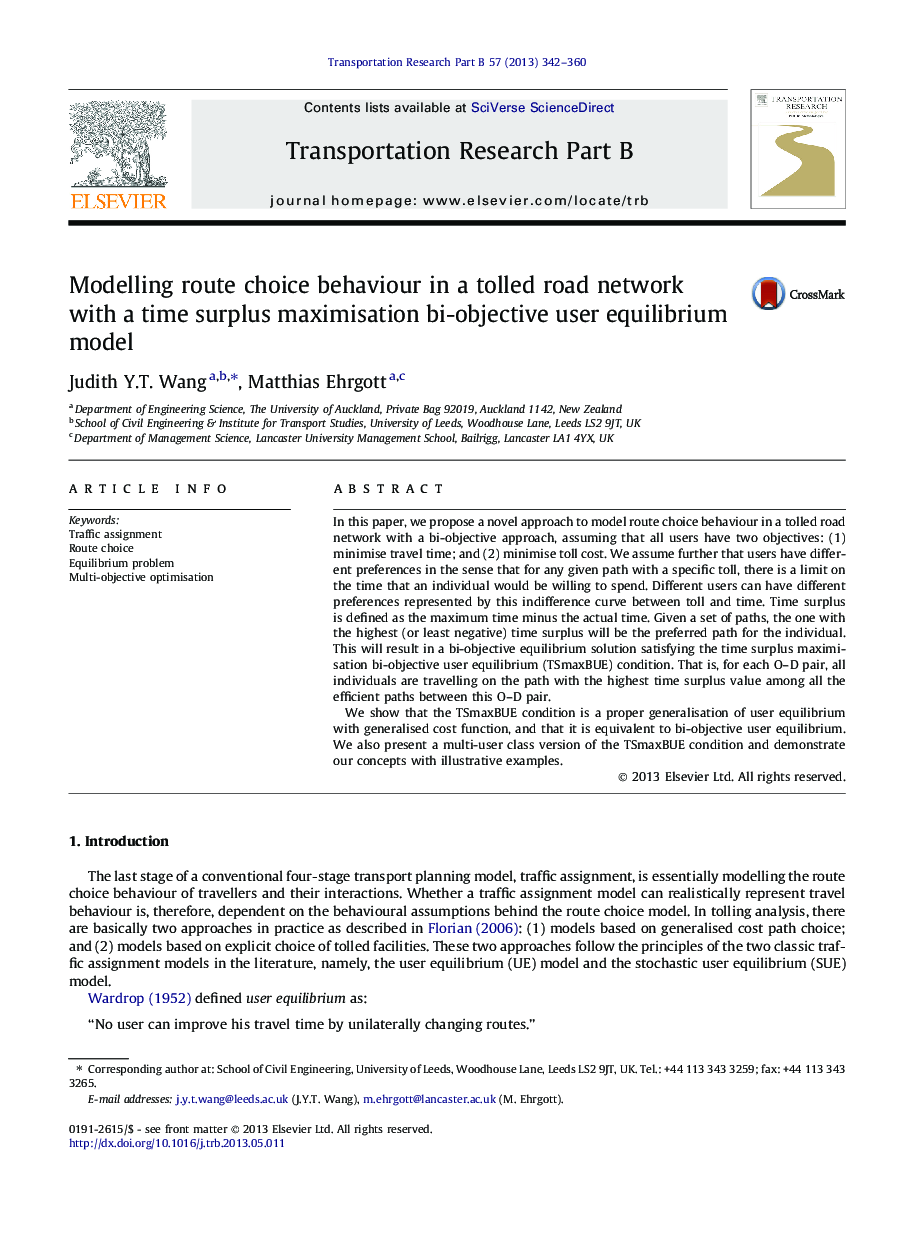| Article ID | Journal | Published Year | Pages | File Type |
|---|---|---|---|---|
| 1131969 | Transportation Research Part B: Methodological | 2013 | 19 Pages |
•We propose a time surplus maximisation bi-objective user equilibrium (TSmaxBUE) model.•We introduce indifference curves between toll and time to model user preferences.•We show that TSmaxBUE is a proper generalisation of generalised cost user equilibrium.•We prove that the TSmaxBUE condition is equivalent to bi-objective user equilibrium.
In this paper, we propose a novel approach to model route choice behaviour in a tolled road network with a bi-objective approach, assuming that all users have two objectives: (1) minimise travel time; and (2) minimise toll cost. We assume further that users have different preferences in the sense that for any given path with a specific toll, there is a limit on the time that an individual would be willing to spend. Different users can have different preferences represented by this indifference curve between toll and time. Time surplus is defined as the maximum time minus the actual time. Given a set of paths, the one with the highest (or least negative) time surplus will be the preferred path for the individual. This will result in a bi-objective equilibrium solution satisfying the time surplus maximisation bi-objective user equilibrium (TSmaxBUE) condition. That is, for each O–D pair, all individuals are travelling on the path with the highest time surplus value among all the efficient paths between this O–D pair.We show that the TSmaxBUE condition is a proper generalisation of user equilibrium with generalised cost function, and that it is equivalent to bi-objective user equilibrium. We also present a multi-user class version of the TSmaxBUE condition and demonstrate our concepts with illustrative examples.
